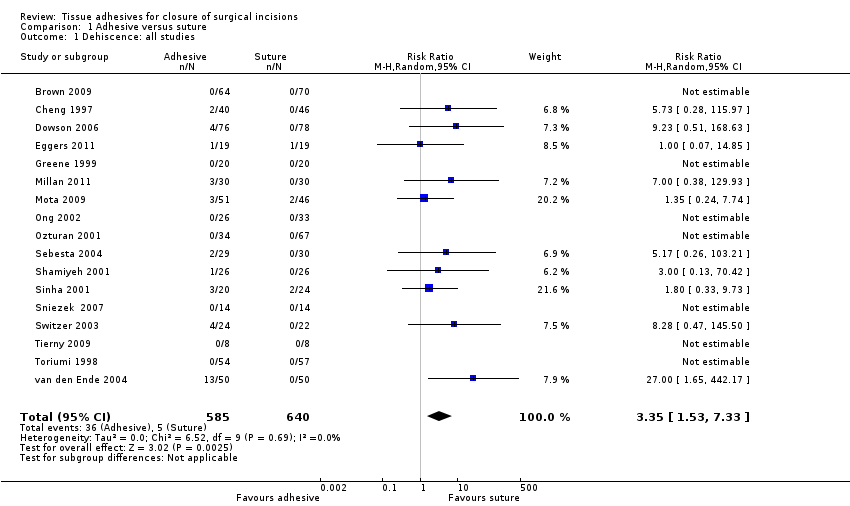Contenido relacionado
Revisiones y protocolos relacionados
Saori Goto, Takashi Sakamoto, Riki Ganeko, Koya Hida, Toshi A Furukawa, Yoshiharu Sakai | 9 abril 2020
Ducha o baño posoperatorios tempranos versus tardíos para prevenir las complicaciones de las heridas
Clare D Toon, Sidhartha Sinha, Brian R Davidson, Kurinchi Selvan Gurusamy | 23 julio 2015
Kittipat Charoenkwan, Zipporah Iheozor‐Ejiofor, Kittipan Rerkasem, Elizabeth Matovinovic | 14 junio 2017
Jo C Dumville, Trish A Gray, Catherine J Walter, Catherine A Sharp, Tamara Page, Rhiannon Macefield, Natalie Blencowe, Thomas KG Milne, Barnaby C Reeves, Jane Blazeby | 20 diciembre 2016
Joan Webster, Abdullah Alghamdi | 22 abril 2015
Clare D Toon, Charnelle Lusuku, Rajarajan Ramamoorthy, Brian R Davidson, Kurinchi Selvan Gurusamy | 3 septiembre 2015
Jon Lund, Samson Tou, Brett Doleman, John P Williams | 13 enero 2017
Fausto Biancari, Valentina Tiozzo | 12 mayo 2010
Soumyadeep Bhaumik, Richard Kirubakaran, Sirshendu Chaudhuri | 6 diciembre 2019
Hester Vermeulen, Dirk T Ubbink, Astrid Goossens, Rien de Vos, Dink A Legemate, Stijn Joël Westerbos | 26 enero 2004
Respuestas clínicas Cochrane
Jane Burch, Iain McCallum | 23 agosto 2016












































